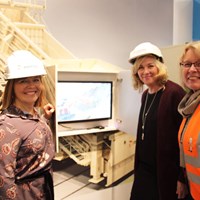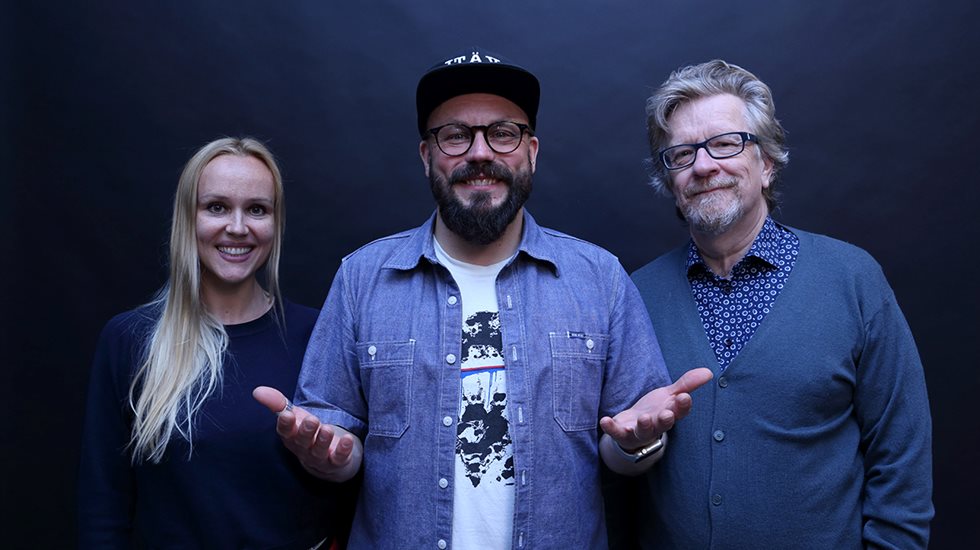In the fifth episode of Metso’s Finnish-language podcast series Studio Planet, Kari Enqvist, a cosmologist and an award-winning popularizer of science, and Sissi Enestam, a space researcher who has worked in such organizations as ESA and NASA, discuss whether space mining will give rise to the next gold rush.
“There are plenty of valuable materials in space, so there is potential. At present, mining in space is not financially profitable – not to mention the practical problems that would have to be overcome,” Enestam says.
Are there any familiar metals or minerals in space?
“It’s believed that asteroids close to the Earth contain iron and nickel, among other materials, and there is platinum in the asteroid belt. It has been calculated that there are enough metals that are needed for electronics devices for approximately fifteen more years on the Earth. If we cannot find any materials to replace them, getting them – even from an asteroid – will become extremely important. We might be able to get helium-3, which is used in nuclear fusion energy, from the Moon. We need materials that might be available in space for ecological solutions used on Earth, such as electric vehicles and solar panels,” Enestam says.
“When talking about mining, the first thing you think about are bulk goods, such as iron, but rare earth elements or cobalt – which are materials that are used in the electronics industry, microcircuits, and the batteries of electric vehicles, in particular – are in much higher demand. You could think that replacing them with other materials would be much cheaper and easier. You can turn carbon into a variety of things with the help of nanotechnology, such as two-dimensional networks that conduct electricity. I believe that this is the most likely direction in the near future,” Enqvist says.
What if we bring something awful from space as well – things, diseases, viruses, or kryptonite?
“Well, kryptonite is only a threat to Superman,” Enqvist says, laughing.
“There is always the risk that something ancient has been trapped inside a rock, for example, and that something comes to life on Earth. The likelihood of something like this happening is infinitesimal, however, and I don’t see it as a major practical problem,” he continues.
Are there any ethical challenges in us trying to get materials from outside our own planet, or should we focus on recycling the existing raw materials on Earth?
“If mining on Earth is not ethical, why would it be ethical somewhere else in the solar system? The actual ethical problem involves a hypothetical case where a private company starts mining an asteroid and breaks something, causing a big hunk of rock to skyrocket towards Helsinki, Moscow, or New York, and the question of responsibility is raised at this point. You don’t need a huge asteroid to reach a destructive power corresponding to thousands of Hiroshima bombs,” Enqvist estimates.
“This is similar to an already existing ethical problem – the need to collect space debris in orbit, with nobody being responsible for the removal of their debris. At some point, we must amend legislation to correspond to such operations in space,” Enestam says.
Will space be the next place where a conflict breaks out? Do you consider this likely?
“It’s possible. The Outer Space Treaty, that regulates the utilization of outer space to some extent, was created at a time when nobody thought it could be realistic. This time, the competition in the case of the Moon is between the United States and China – who will raise flags or establish small colonies on the Moon. Some kind of conflict is to be expected,” Enqvist says.
Do we have any vision of having colonies in space in the near future?
“The European Space Agency (ESA) has discussed at length the willingness to go the Moon. The idea is that ESA would launch the project and governments and businesses would join in it to create an international colony together,” Enestam says.
“Space and its exploration are great in the sense that they allow for the setting of shared dreams for humanity, like the trip to the Moon fifty years ago. Even though it was an American project, it had a global aspect: we humans are going to the Moon! The space can offer dreams, but you need to be realistic,” Enqvist says.
What kind of a planet would you like to leave for the future generations and how can we achieve this?
“A world where we understand the universe at least a little better,” Enestam says.
“I’d like to leave behind a planet where people share the idea of the planet being their joint project and us, the humankind, being a single entity on Earth,” Enqvist says.
Studio Planet is a five-part podcast series on sustainable society where Finnish experts and influencers discuss topical issues. The series aims to contribute to the discussion with consumers on how industry can be involved in sustainable development.
Read the full series:
Climate anxiety can be alleviated by becoming part of the solution
Is mining in space realistic and are asteroids a threat or a crock of gold for the world?
Climate change and consumption habits - what should we give up?

